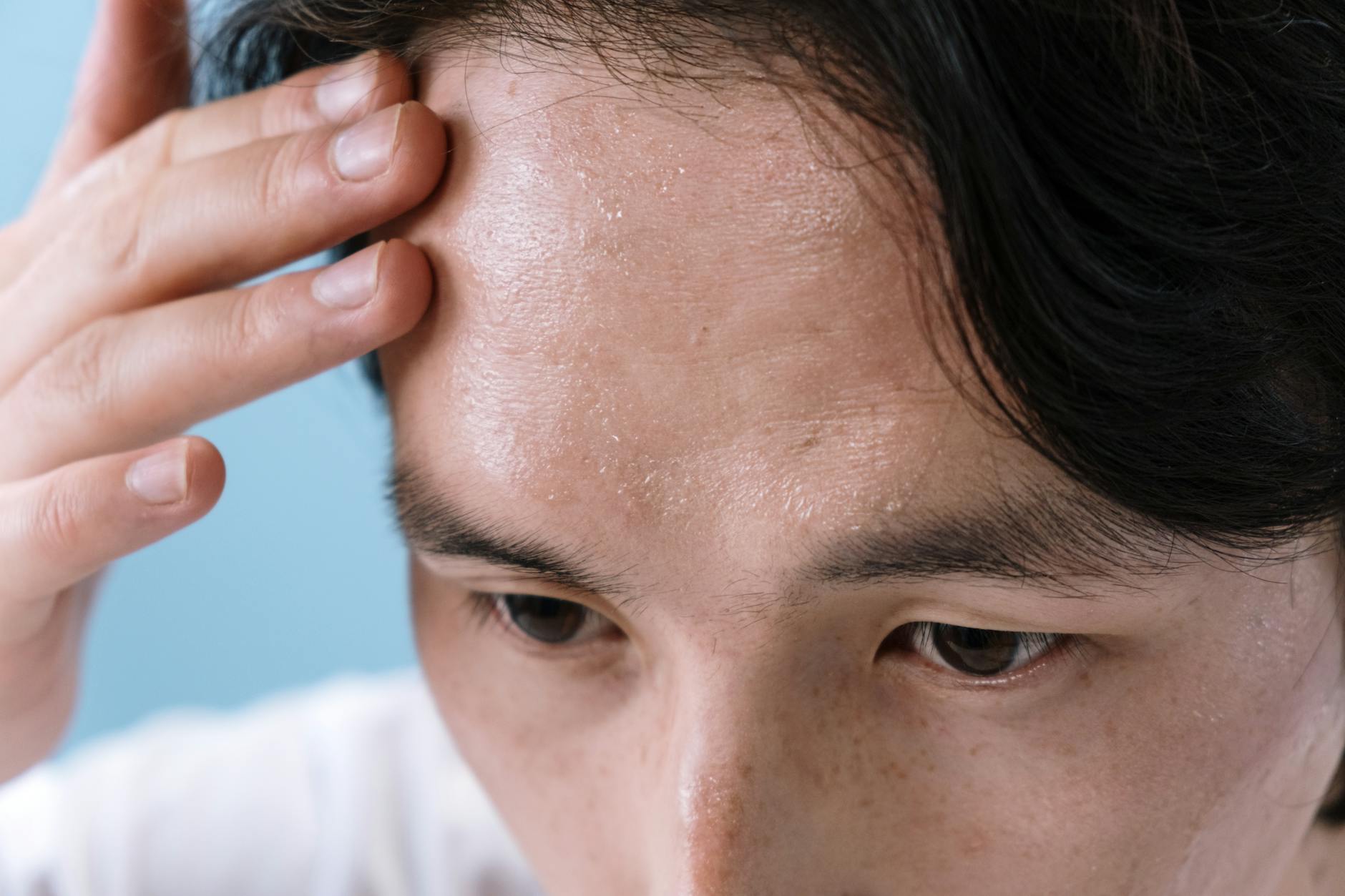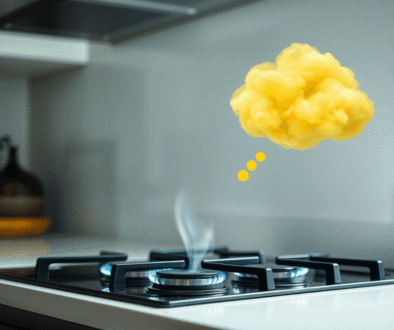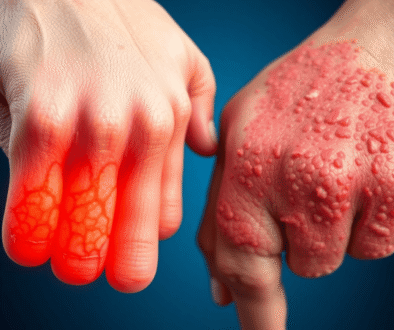Signs of High Blood Pressure: Warning Symptoms You Should Never Ignore
Most of us don’t feel a thing when our blood pressure climbs. That’s how high blood pressure earned its name as a silent threat. It slips by unnoticed until real damage is done.
Left unchecked, it can harm the heart, brain, kidneys, and even our eyes. Knowing the warning signs—even those that show up late—could save lives. In this post, we’ll lay out the symptoms you can’t afford to miss so you can act before it’s too late.
Why High Blood Pressure Is Called the Silent Killer
High blood pressure has an almost invisible presence. We often hear it called the “silent killer,” but what does that really mean? Unlike many illnesses, high blood pressure rarely announces itself with clear signs. Most people won’t feel a thing until major organ damage is already taking place. This quiet nature is why it’s so dangerous — our bodies keep working until suddenly, they can’t.
No Obvious Symptoms for Most
For many, high blood pressure is like an unseen storm brewing. We can walk around for years without ever noticing a problem. Our heads don’t hurt, our chests don’t pound, and we don’t get light-headed most of the time. This silent march is what keeps so many people in the dark. Often, people first learn they have high blood pressure during a routine checkup — or after a health scare. By then, some damage may already have happened.
- Most people have no symptoms at all
- Regular screenings are the only way to know our numbers
- The lack of warning signs leads to missed diagnoses
To learn more about why many don’t know their risks until something goes wrong, check out Why High Blood Pressure Is Known as the Silent Killer.
Silent Damage Over Time
Even without obvious signs, high blood pressure is never harmless. It quietly pushes against the walls of our blood vessels, wearing them down over time. Think of it like water slowly eroding a riverbank — nothing dramatic at first, but the damage builds up.
High blood pressure can:
- Weaken the heart and blood vessels
- Raise the risk of stroke and heart attack
- Harm the kidneys and eyes
According to experts, these dangers make early detection and control so important. The risk isn’t just theory: hypertension is a leading cause of death worldwide. The FDA shares more about this silent threat in their article High Blood Pressure–Understanding the Silent Killer.
The Hard Truth About Late Warning Signs
Sometimes, high blood pressure does show up with symptoms, but usually only when the condition is life-threatening. Severe headaches, vision changes, and sudden chest pain are all late signs — a last call for help. By the time these appear, our organs may already be in trouble.
A recent overview from UC Davis Health points out that the real problem is damage that builds year after year, with no loud alarms. If ignored, this can lead to stroke, heart failure, kidney disease, or even blindness. More on this can be found in their piece Hypertension: The silent killer.
Silent, But Not Powerless
Our best defense is a simple one: check our blood pressure regularly. Many pharmacies now offer walk-up machines. At home, digital cuffs make tracking our numbers quick and easy. We can’t feel high blood pressure, but we can see it on a monitor — and that knowledge could save lives.
 Photo by cottonbro studio
Photo by cottonbro studio
Common Warning Signs of High Blood Pressure
While most of us never notice high blood pressure until we measure it, some signs do pop up—especially when our numbers reach dangerous heights. These symptoms usually show up late, but recognizing them early can help stop major problems. We should pay close attention if we notice any of them, even if they seem mild or come and go.
Headaches and Nosebleeds
Some of the first clues can appear in the head and nose. Many people brush off headaches or nosebleeds as nothing serious, but they can mean our blood pressure is too high. Sudden, intense headaches feel like pounding or pressure behind the eyes and are hard to ignore. These types of headaches often come on quick and may not respond to regular painkillers.
Nosebleeds are another warning, especially if they seem to show up out of nowhere. If we aren’t picking our nose, have dry air, or aren’t on blood thinners, repeated nosebleeds should send up a red flag. Emergency rooms often see bursts of nosebleeds when someone’s pressure spikes suddenly. Most of the time, headaches and nosebleeds won’t point to high blood pressure. But if they’re strong and happen with other symptoms, they matter. The Mayo Clinic explains more about how high blood pressure can cause these issues.
Vision Changes and Blurred Sight
Our eyes are sensitive to changes in blood flow and pressure. Blurred or double vision might show up suddenly if our pressure gets very high. We might see dark spots, floaters, or struggle to focus even in good light. In rare cases, high pressure can lead to bleeding at the back of the eye, swelling of the optic nerve, or temporary loss of sight. These changes can feel like looking through a foggy window or trying to read street signs from far away.
If blurry vision comes out of nowhere or lasts more than a few minutes, it’s time to take action. Even if our sight gets better, the danger isn’t over. Ignoring eye problems risks permanent damage. To better understand how our blood vessels behind the eyes react, check out this resource on hypertension symptoms from the WHO.
Chest Pain, Palpitations, and Shortness of Breath
Our hearts work harder with every bump in blood pressure. If our pressure reaches extreme highs, we might feel chest pain or tightness. This pain doesn’t just signal a problem with the heart; it warns us that pressure is pushing too hard on the entire system. Sometimes the pain will spread to the jaw, arm, or back.
Palpitations—when it feels like the heart is skipping beats or racing for no clear reason—can be another clue. These are not just “butterflies” or stress; they mean our heart is forced to pump against the extra load. Shortness of breath can quickly join these signs, even at rest.
The Cleveland Clinic lists these symptoms as key warnings for a hypertensive crisis, which needs fast attention. If these symptoms hit together, it’s time to get urgent help. Our bodies are sounding the alarm.
Nausea, Fatigue, and Confusion
Sometimes, high blood pressure speaks through more subtle symptoms. Nausea for no clear reason, or even vomiting, can show up when our brain and other organs don’t get enough steady blood flow. Feeling wiped out, dizzy, or weak when we’re usually fine is another sign the heart and vessels are under stress.
Confusion or trouble focusing on basic tasks can also appear. This happens because high blood pressure cuts off part of the flow to our brain. We might forget names, get lost in a familiar place, or have trouble following a simple conversation. These signs can show up during a hypertensive crisis, so they shouldn’t be ignored. For a deeper look at what to watch for, see the CDC’s symptom guide.
 Photo by Nataliya Vaitkevich
Photo by Nataliya Vaitkevich
If any of these warning signs appear—alone or together—it’s safest to get checked by a doctor as soon as possible. Ignoring them gives high blood pressure more time to cause harm that can’t be undone. Our bodies speak in signals, and these are the ones we can’t afford to miss.
Hidden Risks: Complications from Unnoticed High Blood Pressure
Many of us feel fine until high blood pressure throws our lives off course. Most people have no hint of the real damage happening inside their bodies. While it’s easy to ignore what we can’t see, silent high blood pressure is always working behind the scenes. Day after day, it strains our organs and steals away our best years without warning.
The Heart: Silent Wear and Sudden Failure
Every heartbeat presses blood through our arteries. With high blood pressure, that pressure is always turned up. The heart must work harder. Over time, this constant strain thickens the heart’s muscle, much like a builder laying brick after brick. That might sound strong, but it actually weakens the heart.
We may show no signs until we’re hit with chest pain, a weak heartbeat, or even a heart attack. Heart failure can show up when the heart gets too tired to keep up. This risk is very real—heart problems linked to high blood pressure are one of the biggest reasons people are rushed to emergency rooms.
Learn more about these heart threats—many of which hide until it’s almost too late—from the American Heart Association’s resource on health threats from high blood pressure.
The Brain: Stroke and Memory Trouble
Blood vessels in the brain are small and delicate. High blood pressure pushes them toward their breaking point; sometimes they snap. This causes a stroke, a sudden block or bleed inside the brain. Strokes can leave us unable to speak, move, or remember simple things. High blood pressure is one of the top causes of stroke worldwide.
Even smaller problems build up. Subtle memory gaps, trouble focusing, or confusion can all be linked back to silent blood vessel damage in the brain. Some of us may notice forgetfulness, while others see mood changes. Often, this harm creeps in before any clear warning.
For a closer look at these effects, see Mayo Clinic’s guide on hypertension’s effect on the body.
Kidneys: Filters Under Attack
The kidneys act like the body’s filters, cleaning our blood every day. High blood pressure hits these filters hard. Tiny blood vessels inside the kidneys are very sensitive to stress. If we ignore high blood pressure, the vessels can scar or burst. This leads to kidney disease, or in bad cases, kidney failure.
When kidneys fail, dangerous waste builds up in the body. We might notice swelling in our ankles, get tired faster, or see changes in how often we pee. But these signs often don’t show until the damage is done, and hospital care is needed. Learn about the fallout of untreated high blood pressure in Healthline’s review of hypertension complications.
The Eyes: Vision Loss and Silent Damage
Our vision depends on healthy blood vessels. In the eye’s back wall, high blood pressure can cause swelling, bleeding, or even a torn retina. Most people are surprised to learn their eyesight can change because of silent high blood pressure. Blurry vision, seeing dark spots, or even sudden blindness can all occur.
But just like with the kidneys, most signs show up late or not at all. By the time blurred vision or spots appear, much of the damage is set.
Other Hidden Dangers
High blood pressure doesn’t stop with these main organs. Over years, it can create risks we never saw coming:
- Aneurysms: Weak spots in arteries balloon out and can burst.
- Peripheral artery disease: Blood flow to arms and legs gets blocked, leading to pain.
- Sexual dysfunction: Blood flow problems affect performance for men and women alike.
- Cognitive decline: Brain fog and slower thinking creep in, sometimes leading to dementia.
With so many hidden dangers, the safest move is to find out our blood pressure numbers and treat high readings early.
 Photo by i-SENS, USA
Photo by i-SENS, USA
High blood pressure is a thief in the night, stealing health while we carry on with busy lives. Spotting the warning signs early may help, but pressure that goes unchecked always leaves a mark. For a longer list of possible long-term effects, check the Alabama Department of Public Health’s summary of high blood pressure consequences.
Taking Action: Recognizing, Testing, and Managing High Blood Pressure
Spotting the signs of high blood pressure is only half the story. Once we know the risks, we need a plan to catch the problem early, test for it right, and take steps to keep our numbers in a safe zone. Ignoring the pressure lets it build up until it causes real harm. It pays to stay alert, act fast, and keep blood pressure from sneaking past our guard.
 Photo by Artem Podrez
Photo by Artem Podrez
Recognizing When It’s Time to Act
Most of us won’t spot high blood pressure until a doctor checks it. But if symptoms do appear, they demand a quick response. Severe headaches, blurry vision, chest pain, or sudden weakness need urgent care. Relying only on how we feel leaves us guessing. Even when we feel fine, routine checking is the safest move.
- Take warning signs seriously. Do not wait for them to go away.
- Regular checks can save lives. Knowing our numbers gives control.
- Act on family history. If hypertension runs in the family, get checked more often.
If warning signs show up together, do not wait. Seek help right away.
Testing for High Blood Pressure
Testing blood pressure is fast and painless. A small cuff inflates around our arm, measures the squeeze, and gives us two numbers—one for when our heart beats and another for when it rests. This test is part of most doctor visits and is also easy to do at home with digital cuffs.
- Best to test when calm. Rest in a chair for five minutes before the test.
- Avoid caffeine, tobacco, and exercise 30 minutes before. They may skew results.
- Sit with both feet flat on the floor. Keep the arm at heart level.
Those with high readings should test their numbers at different times of day. Changes in routine, stress, or illness can shift our results. Keeping a record over a week paints a more trusted picture.
To learn more about how the test works and what numbers mean, see the Mayo Clinic’s guide to blood pressure testing.
Managing High Blood Pressure
If we catch high blood pressure, taking action right away can stop trouble before it starts. Simple steps at home can turn down the risk, and medications help when needed.
- Eat smart. Choose more fruits, vegetables, whole grains, and skip the salt.
- Move every day. Even a walk can help lower pressure.
- Watch our weight. Even small losses make a difference.
- Limit alcohol and quit smoking. Both raise blood pressure.
- Stick to medications. If prescribed, take them as told by the doctor.
Tracking our results gives us proof these steps work. We can use a log, smartphone app, or notebook. Partner with the doctor. Routine visits help adjust the plan and spot risks early.
For a breakdown of treatment options and steps to control high blood pressure, refer to the Mayo Clinic’s detailed page on hypertension diagnosis and treatment.
Staying Motivated on the Blood Pressure Journey
Change is tough, but forming new habits gets easier with small steps. We can mark progress on a calendar, celebrate healthy choices, and remind ourselves why we are doing this. Even when the numbers look better, our bodies need steady care. High blood pressure likes to sneak back when we stop watching.
Regular testing, smart choices, and teamwork with our care team keep us safe. Early action carves out years of better living—and makes the silent threat much less scary.
Conclusion
Knowing the signs of high blood pressure is our wake-up call. Acting early means we protect our hearts, brains, and eyes before trouble starts. Most of us won’t feel it, which is why numbers matter more than how we feel.
Checking our blood pressure often is a simple habit that pays off for years. Awareness gives us a choice: protect our health now or wait for symptoms that may come too late.
Let’s stay alert, check our numbers regularly, and keep health problems from sneaking up on us. Thank you for reading—sharing what we learn could help someone else, too.


